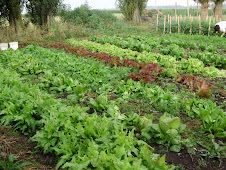


The origin of the Mulefoot is unclear. The breed is most likely to have descended from the Spanish hogs brought to the Americas beginning in the 1500s. It shares some attributes with the Choctaw hog, and the two breeds likely come from the same ancestral stock, which was loosely selected and managed until the late 1800s. In the early 1900s there were two Mulefoot breed associations and over 200 herds registering purebred stock. As of a few years ago their were less than 200 registered Mulefoots and most Mulefoots can be traced back to the Holliday family in Missouri. A few years ago Arie MacFarland in South Dakota bought the Holliday herd of Mulefoots and has continued the tradition of providing breeding stock and restoring the Mulefoots to their prominence. Arie runs an impressive outfit about 20 miles north of Sioux Falls, SD. She has most of the foundation stocks for Mulefoots and Guinea Hogs in the United States. She manages as many as 200 pigs on her farm of 80 acres. She also meticulously manages the genetics to provide as much diversity as possible. She has done an amazing job.
Last Friday I left to make the 2000 mile drive to Dell Rapids, South Dakota to pick up our new herd of Mulefoots from Arie MacFarland. We purchased 3 mature sows and a junior boar from Arie, as well as 5 young pigs that we will raise for butchering in the summer. Five days later and after many hours on the road I arrived home with the newest addition to our farm. Mulefoot hogs are the only pig on the Slow Food Ark of Taste list because of their origin in the U.S. They do not get as large as the Large Blacks that we already have, but will be a nice complement to the Large Blacks. Whereas the Large Blacks are leaner and longer, the Mulefoots will have a bit more fat and bigger hams.
Mulefoots are unique for a couple of reasons, the first is as their name implies, they have a mule foot instead of a cloven hoof that all other pigs have. Second, as you can see in the pictures, they have longer, thicker hair that in some Mulefoots is fairly straight and in others is more curly. They are taller, fatter, and shorter than the Large Blacks and are jet black in color versus a dull black of the Large Blacks.
Mulefoots have a similar disposition as the Large Blacks, both are very docile and easy to handle. They eat primarily eat grass and hay, with a little grain each day to supplement their diet and the occasional pumpkin. We look forward to introducing this amazing pig to Whatcom County.
The middle picture above provides a nice contrast between the Mulefoots and Large Blacks. The three pigs in the upper right hand corner of the picture our are litter of 3 Large Blacks. The pigs in the left hand side of the picture are the Mulefoot pigs. You can see the noticeable difference in hair and color.















